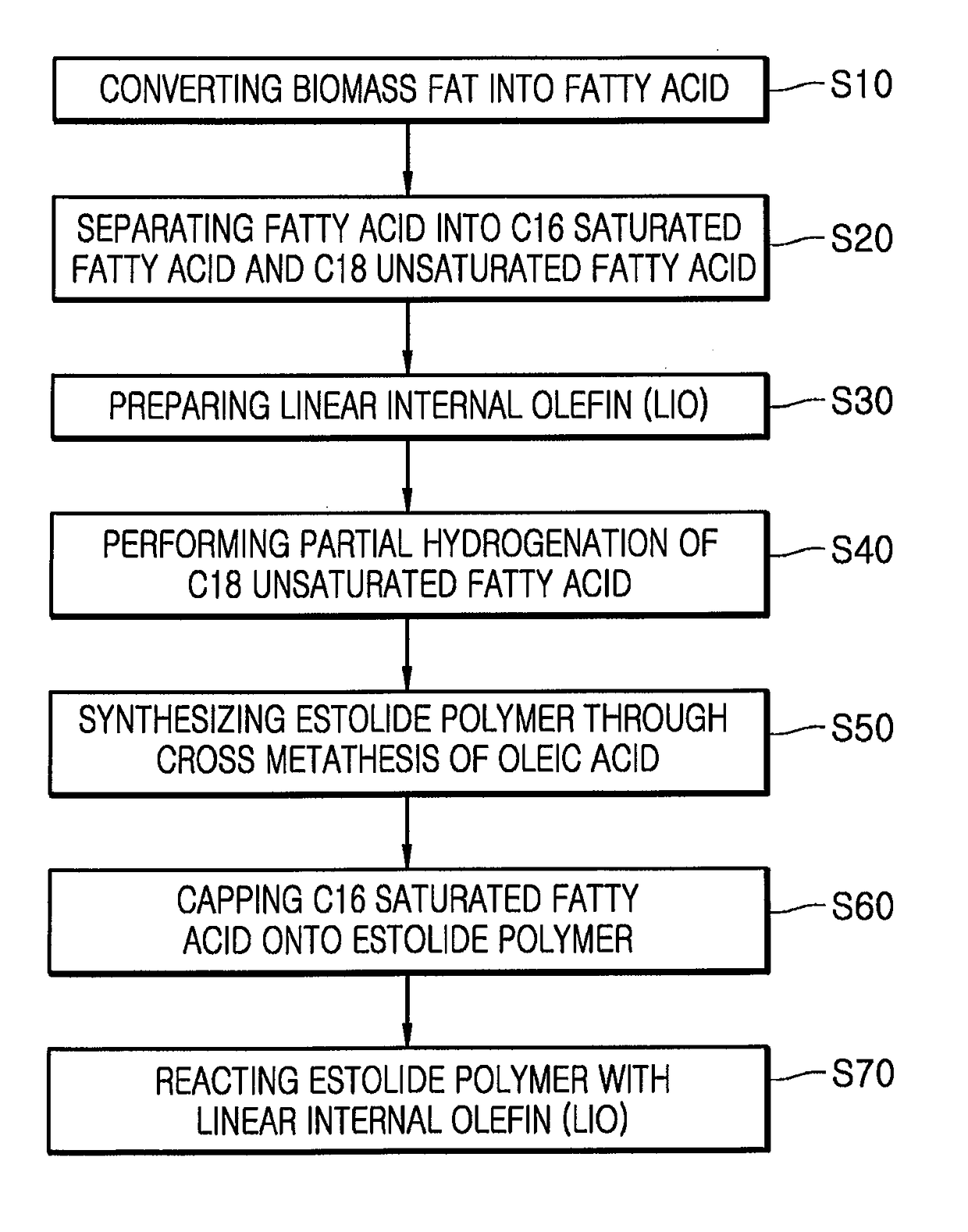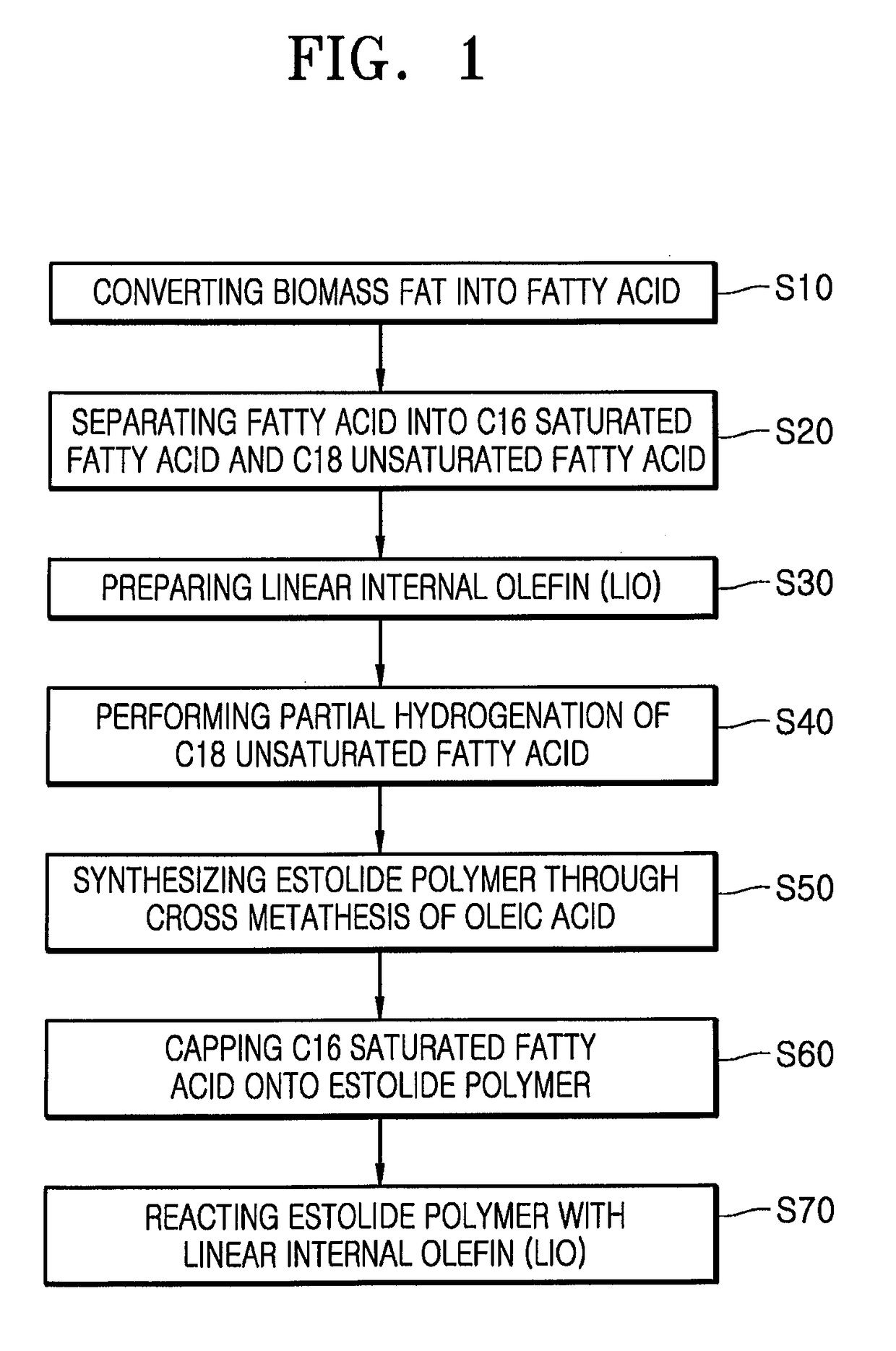Estolide compound and method for preparing the same
a technology of estolide and compound, which is applied in the field of estolide compound, can solve the problems of fundamental methods for preparing estolide, dependence on oleic acid, and unsuitability of triglyceride-derived estolides for use as lubricating oils, and achieve excellent low-temperature stability and oxidative stability
- Summary
- Abstract
- Description
- Claims
- Application Information
AI Technical Summary
Benefits of technology
Problems solved by technology
Method used
Image
Examples
examples
[0100]A. Separation of Fatty Acid
[0101]2 kg of a palm fatty acid distillate (PFAD) specimen was separated into fatty acids at each of reaction temperatures using a TBP cutting apparatus. From analysis results (SimDist) of the PFAD specimen shown in FIG. 3, it could be confirmed that the PFAD specimen included components present in amounts as listed in Table 1. The PFAD specimen was cut based on the reaction temperatures, that is, 300° C., 355° C. and 380° C., thereby obtaining fatty acids in amounts as listed in Table 2, respectively.
[0102]
TABLE 1Fatty acidAmount of component of PFAD (wt %)Myristic acid (C14:0)3Palmitic acid (C16:0)43Oleic acid (C18:1),38Linoleic acid (C18:2),Linolenic acid (C18:3)Mono-, di-glyceride16Total100
[0103]
TABLE 2Amount of each fatty acidFatty acidBoiling point (b.p.)separated and obtained (g)Myristic acid (C14:0)300° C. or less56Palmitic acid (C16:0)300° C.~355° C.881Oleic acid (C18:1),355° C.~380° C.742Linoleic acid (C18:2),Linolenic acid (C18:3)Mono-, di...
PUM
| Property | Measurement | Unit |
|---|---|---|
| temperature | aaaaa | aaaaa |
| temperature | aaaaa | aaaaa |
| pressure | aaaaa | aaaaa |
Abstract
Description
Claims
Application Information
 Login to View More
Login to View More - R&D
- Intellectual Property
- Life Sciences
- Materials
- Tech Scout
- Unparalleled Data Quality
- Higher Quality Content
- 60% Fewer Hallucinations
Browse by: Latest US Patents, China's latest patents, Technical Efficacy Thesaurus, Application Domain, Technology Topic, Popular Technical Reports.
© 2025 PatSnap. All rights reserved.Legal|Privacy policy|Modern Slavery Act Transparency Statement|Sitemap|About US| Contact US: help@patsnap.com



